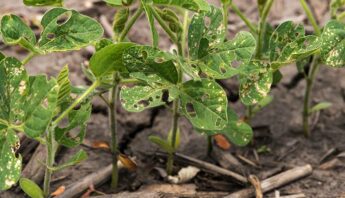The French parliament passed a new law earlier this month prohibiting the private or public use of pesticides in green areas, forests or public space, and severely restricting the number of pesticides that can be used in homes and gardens. This is huge!
After 2020 it will be illegal in France to use pesticides in parks and other public areas unless there is an emergency situation for controlling the spread of pests. And they appear to be serious about enforcement — anyone found using or in possession of banned pesticides could be imprisoned for up to six months with a fine of 30,000 Euros.
Use of pesticides on railways, airports and roadways is not included in the ban.
While the uses of pesticides covered by the new law only account for an estimated 5-10% of all pesticide use in France, the ban will significantly reduce public exposure to harmful pesticides and decrease the number pesticide poisonings from home and other non-agricultural uses. This is very good news.
Success we can build on
The legislation from France has really put hope in my heart. If French legislators can take such strong health-protective decisions, surely U.S. legislators can do so as well?
There are good examples from right here in North America to build on, like the ban on cosmetic uses of pesticide in Ontario (and in many, many communities across Canada). Or statewide bans on use of pesticides on school grounds in Connecticut and New York.
Significant reductions have already been achieved by many school districts in California, employing integrated pest management practices — with no resulting outbreaks of pests. These practices have protected children and controlled pests at the same time.
Use of alternatives to hazardous pesticides in the home and garden is gaining momentum as well. These practices — often quite simple — can go a long way toward protecting people from pesticide exposure.
An increasingly urgent problem
We hope U.S. policymakers are paying attention, because the problem is increasingly urgent.
Just take for example the case of rodenticides (rat poisons) that people use at home. These rodent control products poison 10,000-12,000 children under the age of six in the U.S. every year.
Scientist tell us that it's time for action to protect children from the longer term harms of low-level exposure to pesticides as well. While the insecticide chlorpyrifos was banned for home uses back in 2002, due to evidence of harming children's developing brains, its use in food production continues. This puts children in rural communities at risk, and can also be harmful to all children when residues show up in food.
There are many other examples of pesticides known to harm people’s health that continue to be allowed for home uses in the U.S.
I’m really looking forward to the opportunity for reporting on strong health-protective decisions in the U.S. regarding pesticide use in homes sometime soon! Meanwhile? Here are some tips on protecting kids from pesticides in your home and community.
Photo credit: yaruta/iStock
Updated Feb 21, 2014: In a previous version of this blog it was erroneously mentioned that paraquat is a home use pesticide. The error has been corrected.







